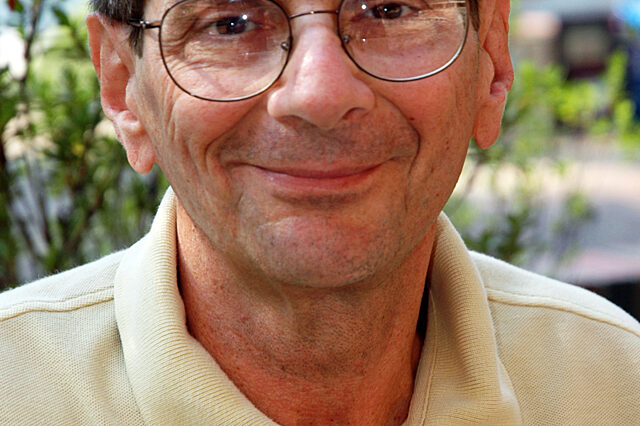UF professor named to Spanish scientific academy

George Casella, Ph.D., is a distinguished professor of statistics with the College of Liberal Arts and Sciences and the University of Florida Genetics Institute. (Photo by Jane Dominguez/UF CLAS)
George Casella, Ph.D., a distinguished professor of statistics with the College of Liberal Arts and Sciences and the University of Florida Genetics Institute, was recently given Spain's highest scientific honor — election to the Royal Academy of Mathematics, Physics and Natural Sciences.
Casella joins foreign members who have won Nobel prizes in physics and chemistry, as well as probability theorists, statisticians and experts in operational research such as James O. Berger, director of the Statistical and Applied Mathematical Sciences Institute at Duke University; Thomas L. Saaty, a mathematician at the University of Pittsburgh; and Simon French, a mathematician at the University of Manchester.
The academy cited Casella's relationship with Spanish scientists through joint work on projects and scientific publications, including collaborations with professors Javier Giron and Elias Moreno, who are also academy members.
In addition, Casella's accomplishments in genetics and genomics — two disciplines being cultivated by the academy — were noted by the Spanish academy.
Casella uses a technique called the Monte Carlo Method to help solve a vast array of problems. Its first recorded use was by scientists at Los Alamos National Laboratories during the race to build the atom bomb during World War II, Casella said. Its power is that it allows experimenters to solve the problem they are interested in using simulations.
"Instead of getting an answer by doing a very difficult mathematical calculation, you devise a simulation that mimics the equation," he said. "By doing that simulation thousands or possibly millions of times, the average is going to be your answer. We can take advantage of today's bigger and better computers and take a bypass to get to the end of these enormously complex calculations."
The method can be applied across the scientific landscape, which has led Casella down some interesting paths.
With researchers in the College of Medicine, he is analyzing data dealing with postoperative infections in patients in intensive care units, trying to discover whether genes can tell doctors which patients are at greatest risk.
Likewise, he is collaborating to understand diversity of stomach bacteria in children to see whether it is related to the onset of diabetes, and studying algorithms that will help in the radar detection of land mines on current and abandoned battlefields.
And with scientists from the UF Institute of Food and Agricultural Sciences, he is scouring the pine tree genome to find tiny gene sequences that might relate to disease in what has become an important U.S. crop, especially for the construction industry.
"George has focused on developing statistical algorithms that are designed to answer questions in genetic analysis," said Kenneth Berns, M.D., director of the UF Genetics Institute. "He is a major contributor to the bioinformatics efforts of the UFGI."
Casella received his master's and doctoral degrees in statistics from Purdue University. He arrived at UF from Cornell University in 2000 and chaired the department of statistics from 2000 to 2006.
Casella also currently serves as the Col. Allan R. and Margaret G. Crow term professor and is a member of the governing board of the Statistical and Mathematical Sciences Institute, a trustee of the National Institute of Statistical Science and an adviser for the Oslo Centre of Statistics for Innovation in Norway.